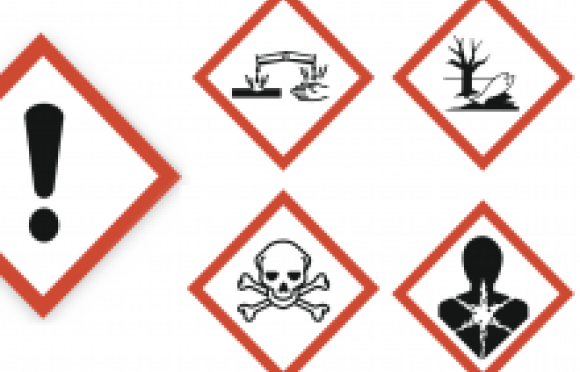People like to enjoy harmony of colours in their environment. Using various types of paint is one of the most popular ways for creating it. And often private consumers use various paint products without b...
Beware of the biocides
Responsible purchasing of the paint products also involve being aware of biocides. Namely, extra attention should be paid to the toxic chemicals/ biocides used in the paint product manufacturing.
Biocides are antimicrobial additives, which are used in paint formulations to keep bacteria from spoiling paint during storage, or to keep fungi, algae and other micro-organisms from growing on the painted surface. Biocides can enter the human body via skin or inhalation.
Paint product
Use of biocides in paint products are regulated in the EU. If the content of biocides in the paint products exceed the permitted level, paint products are marked with the exclamation mark label. For choosing safe paint products, follow paint packaging or read Material Safety Data Sheet (MSDS), to identify biocides used in the paint product manufacturing.
- Biocides labelIf the biocidal product exceeds the permitted limits, the label shall include the hazard statement H317 and the indication of danger 'may cause an allergic skin reaction' or EUH208 'may produce an allergic reaction'
Biocides used for in-can protection
Biocides are used, to keep bacteria from spoiling paint during storage. The EU Ecolabel criteria limit the amount of biocides used in paint products for in-can protection:
- Isothiazolinones (CIT/MIT 3:1)<15 ppm
- Methylisothiazolinone (MIT)<15 ppm
- Benzisothiazolinone (BIT)<500 ppm
Biocides used for film protection
To keep fungi, algae and other micro-organisms from growing on the painted surface. The EcoLabel criteria limit the amount of biocides used in paint products for paint film protection:
- Indoor paints specifically required for high humidity areas with an upper concentration limit of0.30% w/w
- Outdoor paints with an upper concentration limit of0.10% w/w
Biocides are strong sensitizers, producing skin irritations and allergies and may pose ecotoxicological hazards. Therefore, their use is restricted by the EU legislation.


